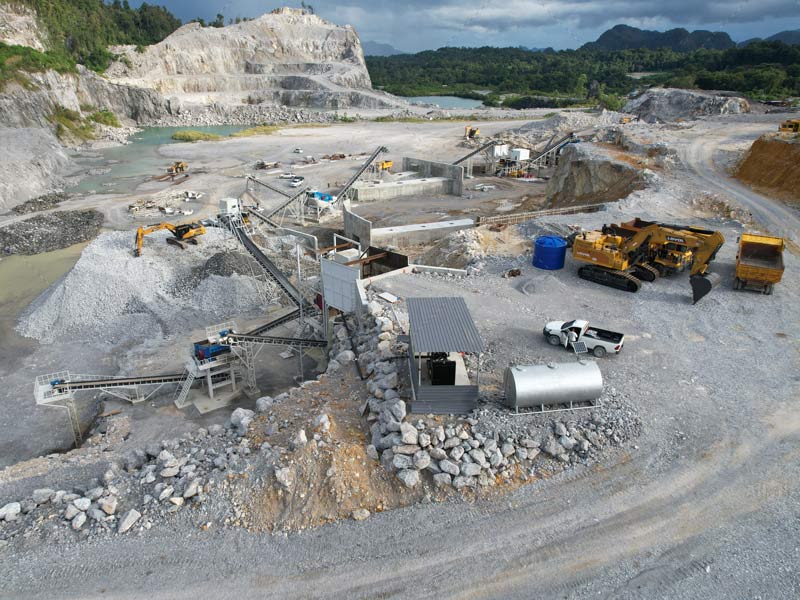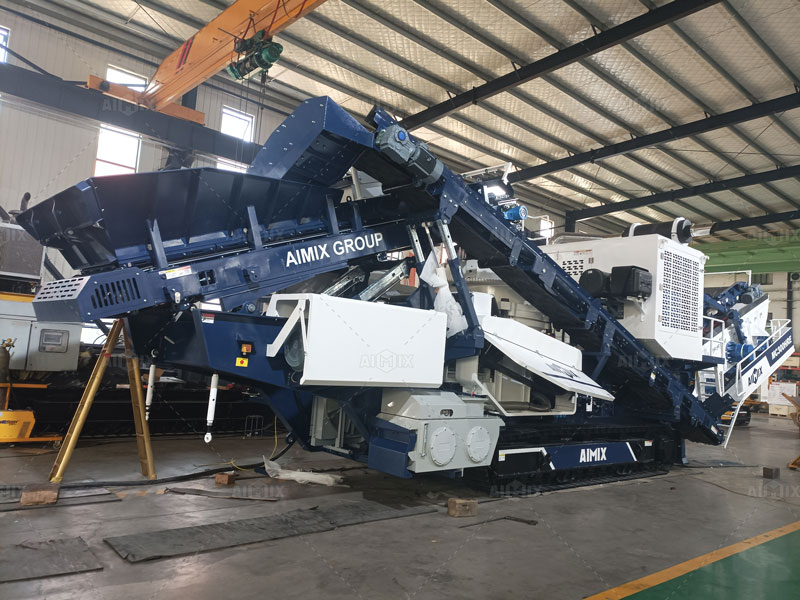Aggregate plants play a crucial role in the construction and mining industries by transforming raw materials into aggregates that are used in building roads, bridges, and other infrastructure. The final products of an aggregate plant are essential for the construction process and are designed to meet specific requirements. In this article, we’ll explore what the final product of an aggregate plant looks like, the types of aggregates produced, and how different crushers contribute to the process. We will also look at the role of portable stone crushers in producing high-quality aggregates.
The Process of Producing Aggregates in an Aggregate Crusher Plant
An aggregate crusher plant(planta de agregados) is a complex facility that uses a variety of crushing, screening, and washing equipment to produce various types of aggregates. The process typically begins with the extraction of raw materials from quarries or mines, followed by a series of crushing and screening stages to shape and size the material according to industry standards.

1. Extraction of Raw Materials
The first step in producing aggregates is the extraction of raw materials, such as rock, gravel, and sand, from quarries or natural deposits. These materials are typically mined using heavy machinery and transported to the aggregate crusher plant, where they will undergo various stages of processing. Common materials used for aggregates include limestone, granite, basalt, and river stone.
2. Primary Crushing
Once the raw materials are delivered to the aggregate crusher plant, they undergo primary crushing, which is typically the first stage of the crushing process. During this stage, large rocks are broken down into smaller, more manageable pieces. The primary crusher, often a jaw crusher or a gyratory crusher, is used to reduce the size of the raw materials to a suitable level for further processing.
3. Secondary and Tertiary Crushing
After the primary crushing stage, the material is passed through secondary and tertiary crushers. These crushers are designed to further reduce the size of the material to meet specific product requirements. Depending on the material and the desired end product, cone crushers, impact crushers, or hammer crushers are typically used in these stages.
4. Screening and Sorting
Once the material has been adequately crushed, it is passed through a series of screens to separate it into different sizes. Screening helps separate the crushed material into fine, medium, and coarse aggregates based on their size. This step ensures that the final products meet the required specifications for different construction applications.
5. Washing and Final Processing
In some aggregate plants, washing is an additional step that helps remove impurities such as dirt, clay, and dust from the crushed material. The washed aggregates are then further processed to ensure they meet industry standards for cleanliness and uniformity.
Types of Aggregates Produced by an Aggregate Crusher Plant
The final products of an aggregate crusher plant vary depending on the type of material being processed and the specific requirements of the construction project. Some of the most common types of aggregates produced include:
1. Crushed Stone
Crushed stone is one of the most common products produced by an aggregate and stone crusher plant(planta chancadora). It is typically made from granite, limestone, or basalt and is used in a wide range of applications, including road construction, concrete production, and landscaping. The size of crushed stone can vary, with typical sizes ranging from small fine aggregates to larger stones that are used in heavy construction projects.
2. Sand
Sand is another common product produced by aggregate plants. It is typically derived from riverbeds, quarries, or mines and is used primarily in concrete production and other construction applications. The grain size and texture of the sand depend on the source material and the screening process used to separate it.
3. Gravel
Gravel is a type of aggregate produced by an aggregate crusher plant that consists of small, rounded stones. It is commonly used in road construction, drainage systems, and landscaping projects. Gravel is often separated into different sizes using screening processes, making it suitable for various applications depending on the required size.
4. Recycled Aggregates
In addition to natural aggregates, many aggregate plants also produce recycled aggregates. These are typically derived from recycled concrete, asphalt, or other construction materials. The recycling process involves crushing and processing used materials to create new aggregates, making it an environmentally friendly alternative to using natural resources.

The Role of Portable Stone Crushers in Aggregate Production
Portable stone crushers(trituradora de piedra portatil) are an essential component in many aggregate plants, especially for projects that require mobility or are located in remote areas. These machines are designed to be easily transported from one site to another and can be quickly set up to begin production. Portable stone crushers can reduce the need for transporting raw materials over long distances, which helps reduce costs and environmental impact.
1. Mobility and Flexibility
Portable stone crushers provide unparalleled flexibility in aggregate production. These machines can be easily moved to different job sites, allowing contractors to process aggregates closer to where they are needed. This is especially beneficial for projects in remote locations where transportation infrastructure may be limited or costly.
2. On-Site Processing
Using portable stone crushers allows for on-site processing of raw materials, eliminating the need to transport large volumes of material to a stationary plant. This reduces transportation costs and minimizes the environmental impact associated with hauling material over long distances. Additionally, it speeds up the overall production process, allowing construction projects to stay on schedule.
Final Appearance of Aggregate Products
The final appearance of the aggregates produced by an aggregate crusher plant depends on the type of crusher used and the material being processed. Here’s a general idea of what the final products look like:
1. Crushed Stone
Crushed stone typically appears as irregularly shaped fragments of rock(trituradora de roca). The size and texture of the stone can vary, with smaller stones often appearing angular and sharp, while larger stones are more rounded. The color of the stone depends on the material being crushed, with granite producing a light gray or white stone, while limestone produces a tan or beige stone.
2. Sand
Sand produced in aggregate plants typically appears as fine, granular particles that are uniform in size. The color of the sand can range from light brown to golden, depending on the source material. The texture is generally smooth, and the particles are small enough to be easily incorporated into concrete mixes.
3. Gravel
Gravel is made up of rounded or semi-rounded stones that range in size from small pebbles to larger rocks. The color of the gravel depends on the source material and can vary from light gray to darker shades of brown or red. The smooth texture and rounded shape of gravel make it ideal for applications such as landscaping and drainage systems.
Conclusion
The final product of an aggregate plant consists of various types of aggregates, including crushed stone, sand, gravel, and recycled materials, all of which play a significant role in construction. The use of portable stone crushers adds mobility and flexibility to aggregate production, making it easier to process materials on-site. Understanding what the final products of an aggregate plant look like helps contractors and construction companies choose the right materials for their projects, ensuring quality, efficiency, and cost-effectiveness.